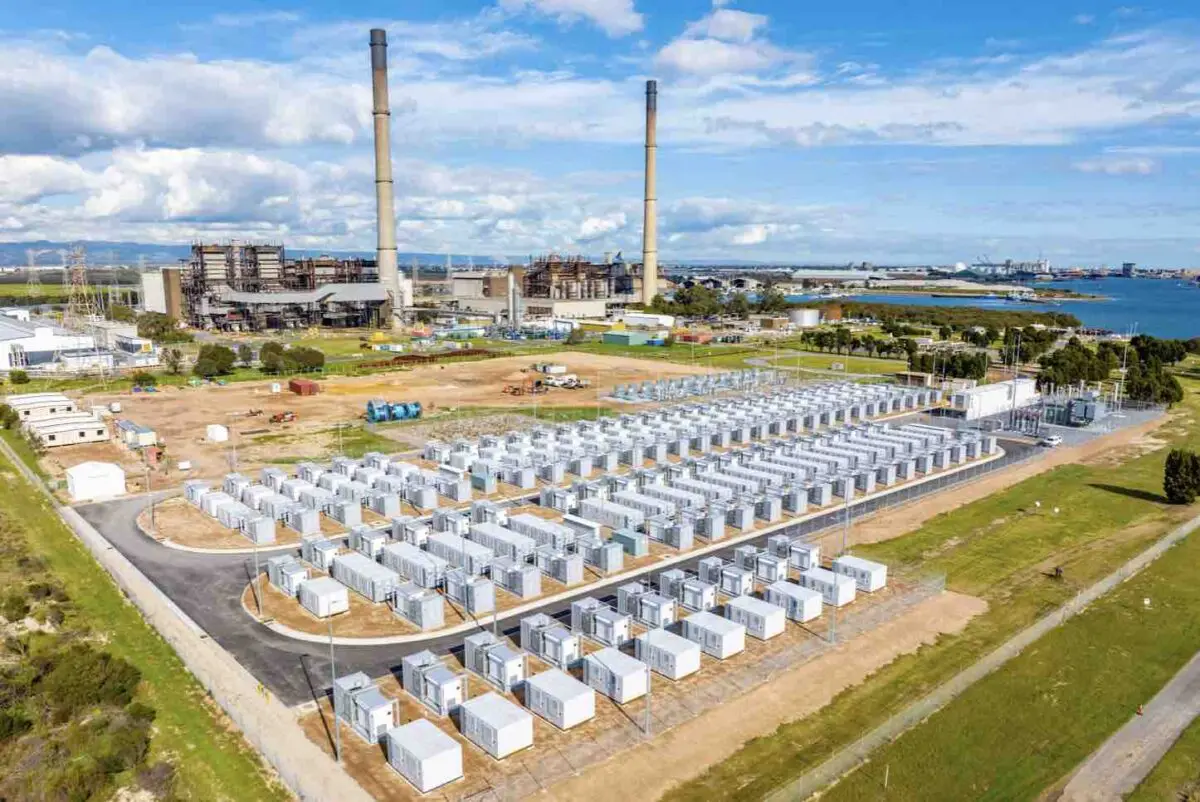AGL Energy on Tuesday formal opened its first operational grid-scale battery, and is looking to rapidly expand its storage portfolio as it transitions its fossil fuel generation hubs into clean energy precincts.
The 250MW/250MWh Torrens Island battery is the biggest in South Australia – trumping the original “Tesla big battery”, formally known as the Hornsdale Power Reserve that is now sized at 150MW/193MWh.
It is also the second biggest battery in the country – behind only Neoen’s Victoria Big Battery (300MW and 450MWh) – and its 6,000 battery modules that sit in 218 battery units take up the same space as the historic Adelaide Oval.
But it is what the project says about the nature and speed of the clean energy transition towards 100 per cent renewables that is the most important.
The Torrens Island battery is the biggest in the world to feature “grid forming inverters” – the technology that is expected to ultimately deliver many, if not all, of the grid “services” traditionally provided by fossil fuel systems fuelled by coal and gas. And it is hastening the transition of one of AGL’s biggest fossil fuel generation sites.
“This is where the transition is happening the quickest,” AGL CEO Damien Nicks told RenewEconomy in an interview on Tuesday, noting also the 70 per cent penetration of wind and solar in the state, the ongoing closures of its thermal gas plants, and the construction of fast-start gas peaking units at the site.
“The gas peaker is an amazing piece of kit, on and off in five minutes, perfect for this marketplace here,” Nicks said. “And the battery is on and off in milliseconds.
“So I think that is where the future of this market goes. I think the difference here maybe to other states is we’ve had gas (rather than coal), so we could do this very, very quickly.”
The Torrens Island battery will likely be expanded to four hours of storage as it plays a greater role in shifting wind and solar output to times of peak periods.
But AGL chief operating officer Markus Brokhof says that four-hours storage will not work economically for the battery while much of the state’s existing gas fleet – built to support and back-up the state’s coal fired power generators that are now closed – are still in the system.
The operation of Torrens Island battery, Brokhof says, will be divided equally between frequency control, arbitrage, and the “caps market” – hedging against high peak prices. The grid forming inverter technology will be used as required, taking pressure off the synchronous condensers that currently dominate this market.
The Torrens Island battery was built in 18 months, but Nicks says it could have come on line earlier had it not been required – like the smaller 50MW, 50MWh battery AGL is building in Broken Hill – to add “harmonic filters” to ensure that it sang the same tune as the grid. Many in the industry question if these are needed.
“I would have liked to have seen this battery connected a couple of months ago,” Nicks said. “So we’ve had to put harmonic filters on this battery, that’s caused a little bit of delay.
“In the scheme of things it’s not material, but I’d like to be able to work through those type of things so we can actually reduce that connection time into the future.”
The Torrens Island and Broken Hill batteries are the first to be built and operated by AGL, although it has had the operating contracts for the Dalrymple North battery in South Australia and the new Wandoan South battery in Queensland.
Nicks says AGL hopes to make a decision on the potential 500MW, four hour battery (2,000MWh) at Liddell in the NSW Hunter Valley – where the company closed the ageing coal plant in April – in the next few months.
It is also eyeing battery storage proposals at Tomago, next to the existing smelter, and at Loy Yang A, the brown coal generator it has now committed to closing in 2035.
South Australia energy minister Tom Koutsantonis said the opening of the Torrens Island battery vindicatesd the decision taken (under the then state Labor government) in 2017 to pioneer big battery technology.
“That decision was at the time derided as little more than a tourist attraction, akin to the Big Banana or Big Pineapple – but it has set a template that is now emulated around the world,” Koutsantonis said in a statement.
“Already more than 70 per cent of South Australia’s electricity is supplied by renewables and we want this to grow as we reduce dependence on expensive gas and unreliable coal power.
“Instead of turning off people’s solar systems when there is an excess of supply, solutions such as our Hydrogen Jobs Plan and projects such as this battery create value by storing that cheap energy instead of wasting it.
The battery is also the biggest to be delivered in Australia by Finish technology group Wärtsilä.
“This landmark project is helping Australia take a major step towards a 100% renewable grid and its net-zero emissions targets,” said its vice president of energy storage and optimisation, Andy Tang.
“Australia’s energy transition is all about balance. Wärtsilä is partnering with AGL to help balance the intermittency of renewables and provide flexible energy capacity, while reducing their operational and lifetime costs.”
See RenewEconomy’s Big Battery Storage Map of Australia










